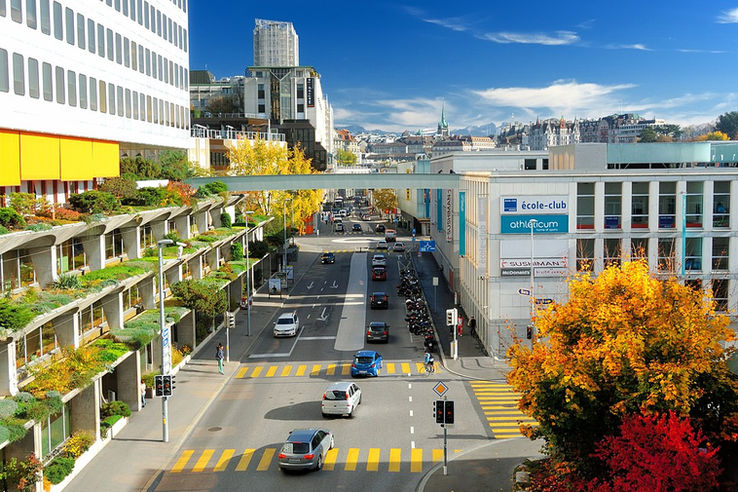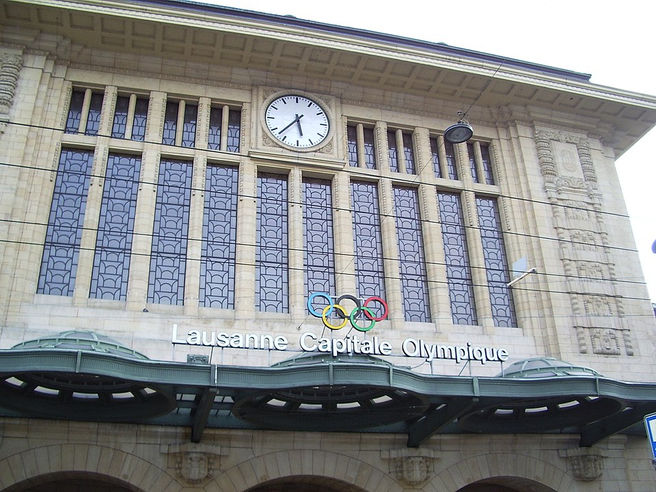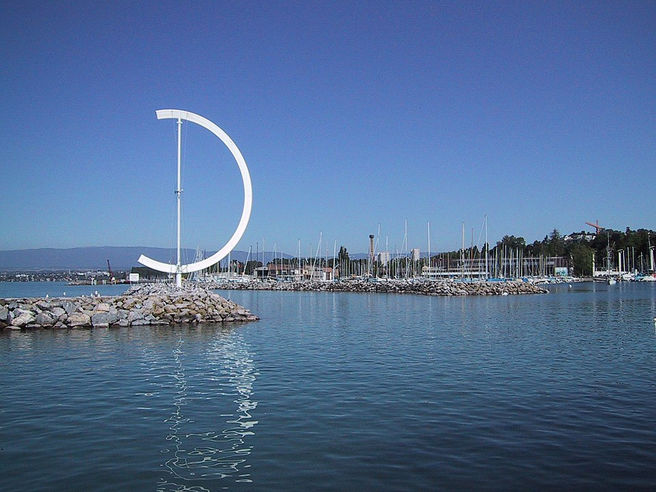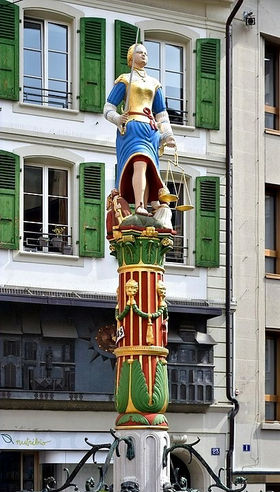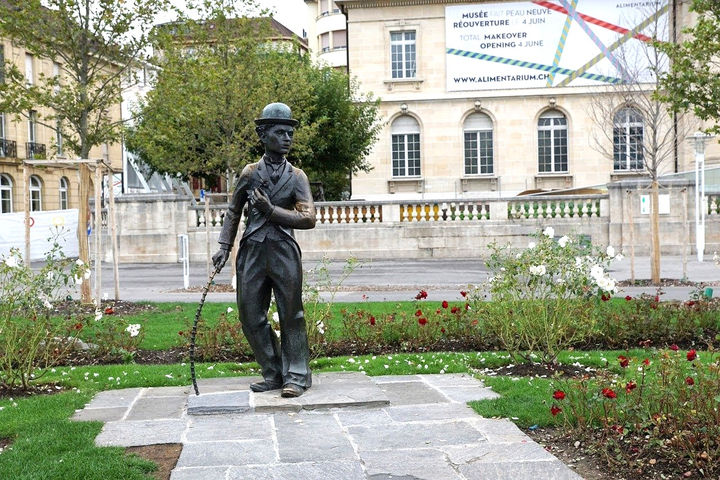
Lausanne
Lausanne, a green and quaint city, sits right on Lake Geneva, and it's surrounded by snow-topped mountains, in Switzerland's French-speaking region. It is the world headquarters of the Olympics, home to the only Olympic Museum in Europe, which houses the world's largest collection and archive of anything-Olympics. The city is blend with the modern and medieval architecture, offers plenty of green spaces too.
Lake Geneva (Lac Léman)
The shore from Lausanne as far as Montreux is known as the Swiss Riviera, a sun-drenched landscape of terraced plantings dropping to a shoreline of gardens, palm trees, and picturesque villages. The best way to enjoy the lake is to board one of the lake steamers.
Olympic Museum
Opened in 1993, the Olympic Museum is the largest of its kind in the world. It displays the entire history of the games, from their origins in ancient Greece to the most recent, and including Olympic torches, clothing worn by Olympians and collections of precious objects dating from Greek antiquity to modern times. The museum is located in Ouchy, offers commanding view over Lake Geneva from the top of the Olympic Park.
Ouchy Promenade
If you’re up for a restorative stroll, you could make for the Ouchy, a chic setting for easy walks, with flower-lined promenade between the old and new ports. During summer, local favourite activity is to rent a pedalo and explore the waters or simply bathing in the lake, soaking in the sun.
Several historical treaties were signed in the famous grand hotels along the shore. At the center of this stands a 12th-century castle, the Château d'Ouchy, in which the peace treaty between Turkey, Greece, and the Allies was signed in 1923. The chateau is now a luxury hotel and fine-dining restaurant. The Accord de Lausanne, where European powers agreed to suspend World War I reparations payments, was signed at the opulent Beau-Rivage Palace in 1932.
Cathedral of Notre-Dame
A landmark of Lausanne, The Cathedral with its five towers rising above the city from the hilltop, stands proudly at the heart of the Old Town .
The early Gothic cathedral was built in the 13th as a Catholic Church, but became Protestant in 1536 during Reformation.
During Reformation, the Cathedral underwent significant changes, most interior was covered over. But after restoration at the beginning of the 20th century, almost everything was revealed . The paintings and statues dating back to the original construction are still visible. The Cathedral has been completely restored since October 2007, and renowned as one of the most beautiful gothic art monuments in Europe.
Cathedral of Lausanne has a traditional function for you to discover by night...The Cathedral’s night watchman. From the 72-meter-high central tower, a night watchman calls out the hourly from 10pm until 2am, 365 days a year, for more than six centuries. The original purpose of the lookout was to provide a warning in case of fire though it has now become a traditional function. Since 2002, the official lookout is Renato Häusler, who intends to retire in 2024 when he turns 65.
Place de la Palud
Below the cathedral, is Place de la Palud, the old city square, with winding cobberstone streets reserved for pedestrians. In the center of the square, you'll see Lausanne's oldest fountain, with a statue representing Justice. Next to the fountain, is the mechanical clock (Horloge de la Palud), which was assembled for the Swiss National Exhibition in 1964. It presents the history of Vaud in animated scenes at the chime of the hour, from 9:00 to 19:00. Overlooking the square is the 17th century Town Hall.
The EPFL Rolex Learning Center
The EPFL Rolex Learning Center, (Lausanne Federal Institute of Technology, EPFL) , a building shaped like a wave, looks so light and airy that it seems almost floating, is the campus hub and library for the École polytechnique fédérale de Lausanne (EPFL). Designed by the winners of 2010 Pritzker Prize, Japanese-duo SANAA, Kazuyo Sejima and Rye Nishizawa.
The building opened on 22 February 2010 and was inaugurated on 27 May 2010. The library is open to both students and the public.
Lavaux Vineyards
Declare as one of the UNESCO World Heritage site for its undisputed beauty and the uniqueness of its natural landscape, the Lavaux vineyard is nestled between the sloped lakeside of Lausanne and Montreux with the Alps as a backdrop. The beauty of this landscape is simply jaw-dropping.
Sample world-class wine in one of the local winegrower’s cellars, visit the charming medieval villages that date back to the 11th century, a truly unique place where one can find all the peace and tranquillity that have been forgotten by the modern era.
Vevey
Vevey è una delle "perle della riviera svizzera". Il suo lago è circondato da una vista mozzafiato sul panorama alpino, inondato da splendidi panorami. È lì che Charlie Chaplin ha trascorso gli ultimi 25 anni della sua vita.
Chillon Castle
The 13th-century Chillon Castle is one of the biggest touristic draws in Montreaux, sits proudly on a rocky hill overlooking the lake, creating a very romantic landscape. Former home to the Counts of Savoy, this stunning fortified castle is like a vision from a fairytale, features a maze of hallways, courtyards, towers, and even prison cells that date back to the 12th century. Lord Byron was inspired by the Castle to write his poem ‘The Prisoner of Chillon'. Look out for his name, which he carved into a pillar in the dungeon.
Queen's Montreux Mountain Studios
For fans of the British rock band, Queen, Montreux is a must-see city . The former musical studios of the legendary band Queen, has been transformed into a museum , where you can see the original control room, old tapes, photographs, the original handwritten copies of lyrics and even some of Freddie Mercury's costumes. The band’s front-man Freddie Mercury adored Montreux with such passion that he became a resident. You'll see his statue along the promenade.
Vevey
Vevey is also one of the Pearls of the Swiss Riviera. It’s where Charlie Chaplin spent the last 25 years of his life. Other great places to visit is the Charlie Chaplin Museum. Right on the lakeside you’ll find a statue of Charlie Chaplin,looking out over the lake. It is one of Vevey’s most famous attraction.
Find the giant fork sticking out of Lake Geneva and you’ve found Alimentarium Food Museum. Created by Nestle, it is the first museum in the world displaying everything about food.
Glacier 3000
While in Swiss Riviera, make a trip to Swiss’s mountain, Glacier 3000, it's only 45 minutes from Montreux. Take a cable car from Col du Pillon, in only 15 minutes, you’ll arrive at the summit. There are many activities available in the snowpark. Cross the Peak Walk suspension bridge, the world’s first suspension footbridge that connects two submits, go for tobogganing, dog sledding, ride the Alpine Coaster, or hit the slopes for cross-country skiing, or just sit and relax, enjoy the breathtaking 360-degree panorama of the surrounding Alps.
